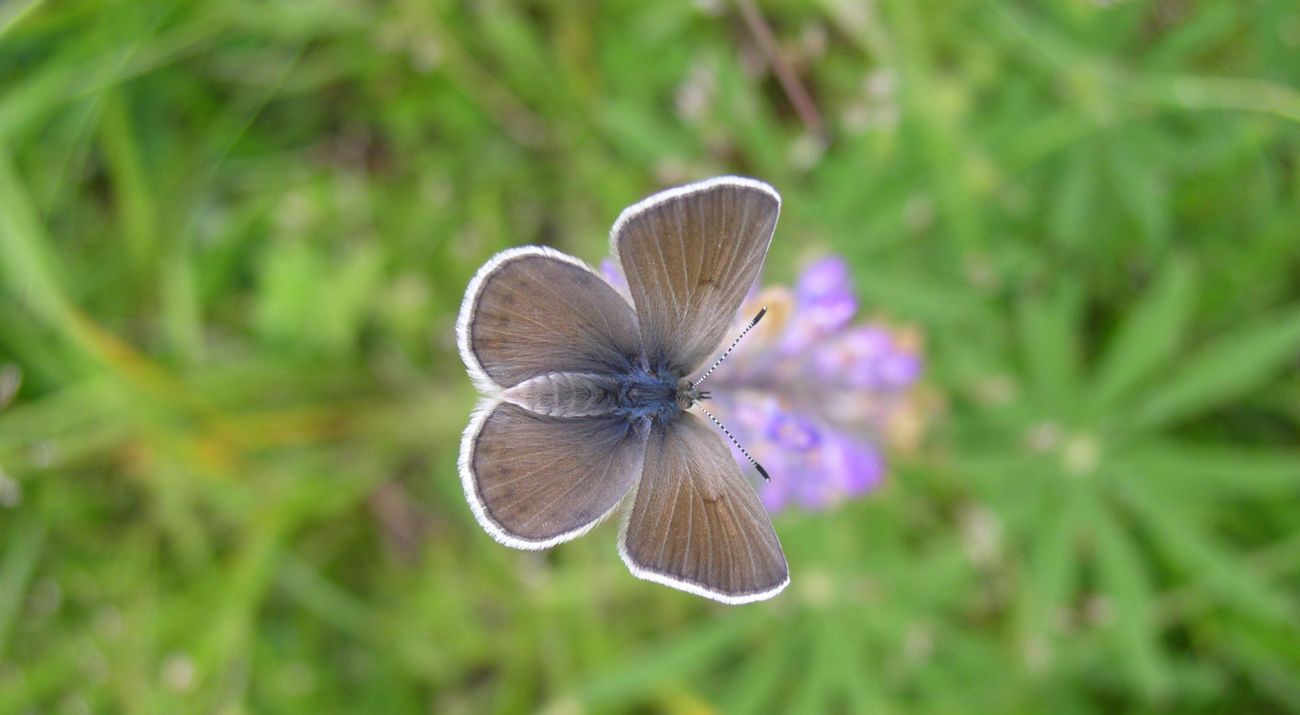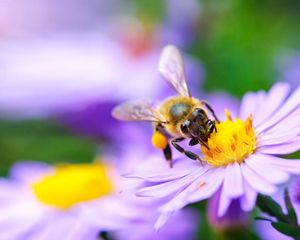Fender’s Blue Butterfly and Kincaid’s Lupine: A Love Story
The fate of this endangered pollinator is tied to a single wildflower species that blooms in the prairie lands of Oregon's Willamette Valley
It’s early May in a blooming Willamette Valley and something special is happening among the wildflowers: a Fender’s blue butterfly is emerging from its chrysalis. Beneath a towering purple flower called Kincaid’s lupine, the quarter-sized butterfly flaps its dusty blue wings for the very first time.
With only eight weeks to live, she sets to work right away feeding on nectar from various wildflowers to pollinate her prairie home. Her world is small—she will never venture more than a mile from where she was born. Before she dies, she will lay her eggs on the underside of a Kincaid’s lupine leaf, the same type of flower she was born and fed upon as a tiny larvae. Only this particular lupine will do—the Fender’s blue butterfly is extremely particular when it comes to making a home for the next generation.
Get Oregon Stories in Your Inbox!
Keep up on Oregon conservation work when you join our email list.
The Fender's Blue Butterfly Needs Healthy Prairie in Oregon's Willamette Valley
This is a love story that is both beautiful and tragic. Due to her specialist tendencies—she only lives in the Willamette Valley and reproduces on only one kind of flower—the fate of the Fender’s blue butterfly is inextricably entwined with that of her beloved lupine. But there’s a problem. The Kincaid’s lupine is particular, too. This flower will only grow in suitable upland prairie habitat. So much of the prairie—and the Kincaid’s lupine—has disappeared in the valley due to a variety of causes from urbanization, agriculture and non-native plant invasions to the suppression of wildfire—that the Fender’s blue butterfly teeters on the edge of extinction. With only one percent of the prairie remaining, conservation is crucial to the survival of both plant and pollinator.


Restoring Willow Creek Preserve's Prairie Habitat for Pollinators
As she flits from flower to flower in a paradise of sweet smells and vivid colors, the butterfly is unaware that she’s one of the last remaining of her kind. She was born at TNC’s Willow Creek Preserve in Eugene, home to one of only three or four remaining large populations of Fender’s blue butterflies. To her, the 500-acre nature preserve that TNC staff and volunteers have worked for decades to restore is bountiful and expansive—the perfect place to call home.

She emerged in the area of the preserve they call the “hay field,” a 100-acre section that had been converted from prairie to pasture years ago for grazing sheep and cows. Trees and non-native plants such as Himalayan blackberry had also encroached, overpowering the prairie grass and flowers. With the help of partners, TNC staff reintroduced the natural role of fire to the landscape here in the form of controlled burns. This necessary disturbance keeps the native prairie plants healthy and the threats at bay. Thanks to careful burning and mowing, manual removal of non-native species, years of planting and your support, today the hay field is once again a glorious example of upland prairie habitat. It’s positively bursting with wildflowers, not the least of which are Kincaid’s lupine.
“It’s really a story of if you plant it, they will come,” says TNC Project Manager Jason Nuckols. “The prairie is healthy, the lupine is growing and the Willow Creek population of butterflies is doing really well.”
As spring turns to summer in the valley, the tiny butterfly will flap her wings for the final time. The larvae she deposited on the lupine leaf has hatched, eaten its first leafy bites and will soon drop to the earth beneath the flower where it will burrow in the ground to hibernate through fall and winter. When it crawls back out next March or April, the lupine will be there to host and feed the larvae until it pupates and emerges as its mother had: a Fender’s blue butterfly, ready to pollinate its prairie home.
Quote: Jason Nuckols
“It’s really a story of if you plant it, they will come. The prairie is healthy, the lupine is growing and the Willow Creek population of butterflies is doing really well.”
Donate to Conservation in Oregon
Support our work at Willow Creek and beyond when you make a donation or become a member.


